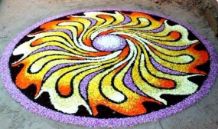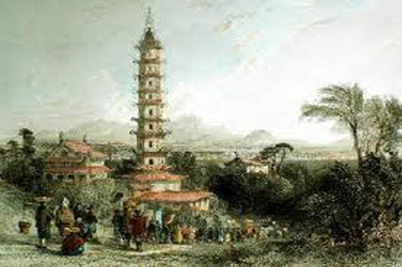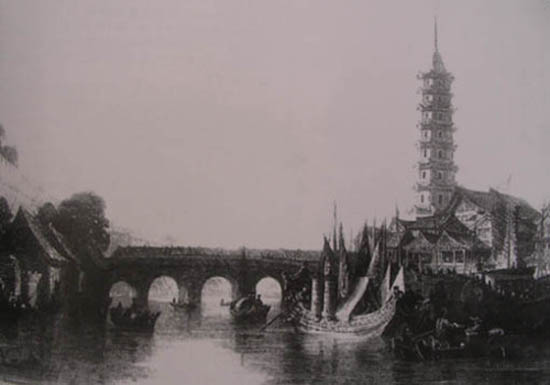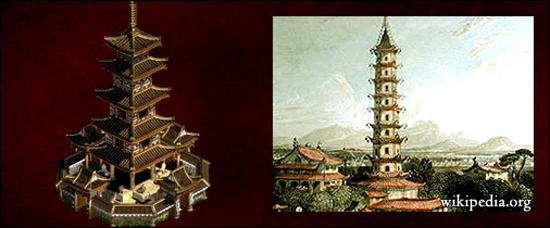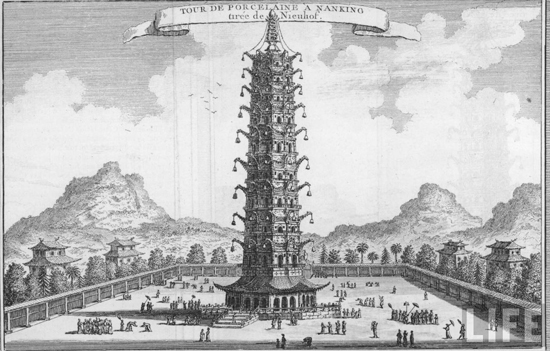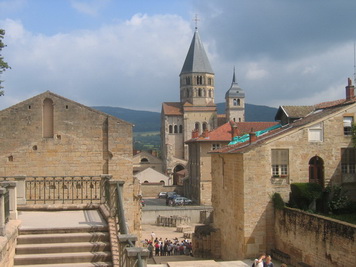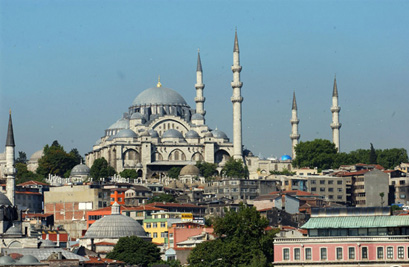Traveling to China, Porcelain Tower, Nanjing… to The Porcelain Tower (or Porcelain Pagoda) of Nanjing which is also known as Bao’ensi by the Chinese people (meaning “Temple of Gratitude” ) is a historical site does not exist now.
This amazing Porcelain Pagoda tower functioned as a center of pilgrimage is among world wonders. Located on the south bank of the Yangtze in Nanjing, the ancient capital of China.
 Porcelain Tower of Nanjing was a pagoda constructed by the Chinese Emperor Yung Le around 15th century during the Ming Dynasty it was one of the largest buildings in China. The base shape is octagonal (with eight corners) With 260 feet high with 97 feet in diameter, it contains 9 stories tall. When the Confucius temple Nanjing was being built it was planned to be 13 stories tall and a total height of 330 feet. As the stories went up it became narrower than the one below to compensate for the weight. If each floor had been the same size, the tower would collapse on top of everything.
Porcelain Tower of Nanjing was a pagoda constructed by the Chinese Emperor Yung Le around 15th century during the Ming Dynasty it was one of the largest buildings in China. The base shape is octagonal (with eight corners) With 260 feet high with 97 feet in diameter, it contains 9 stories tall. When the Confucius temple Nanjing was being built it was planned to be 13 stories tall and a total height of 330 feet. As the stories went up it became narrower than the one below to compensate for the weight. If each floor had been the same size, the tower would collapse on top of everything.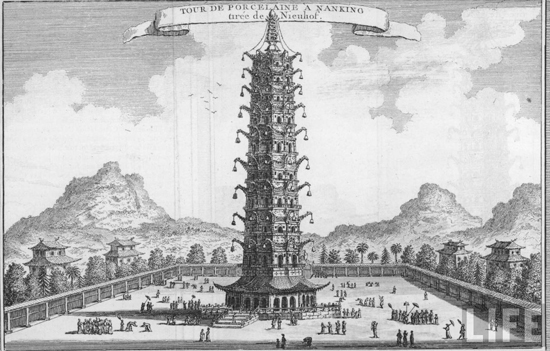
The porcelain tower of Nanking was the largest building in China at the time of its construction only a few Chinese pagodas surpass its height, such as Liaodi Pagoda of 11th century in Hebei or the non-existent 330 ft tall of 7th century in Chang’an. The tower was existed up to the middle of the 19th century. Now traveling to the site only remnants are seen. Each brick was made out of superior quality brilliant white porcelain interlaid with colored stones, Every block in the tower was dried out in the blazing sun during the day , that would shine in sunlight, and by night it was illuminated by 140 lamps were hung to dry them out and to illuminate the pictures (imprinted by glazes and stoneware) of flowers, animals and landscapes during nights. The nanjing confucius temple was also decorated with numerous Buddhist images. The porcelain walls were decorated with beautiful artwork of nature. A spiral staircase led from the 8th floor up to the roof. A large spire came from the eighth story all the way up to the roof.The top of the roof was marked by a golden sphere. It is believed that the spiral staircase had 140 steps that matched with the number of the lamps that illuminated the outer wall.
The Closing Events of the Campaign in China’, a book written by Granville Gower Loch in 1843, contains a detailed description of the porcelain tower of Nanking as it existed in the early 1840s.
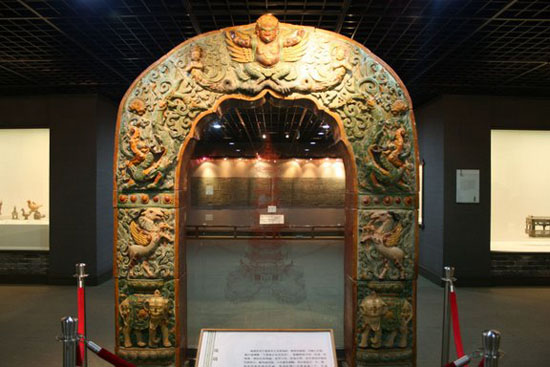
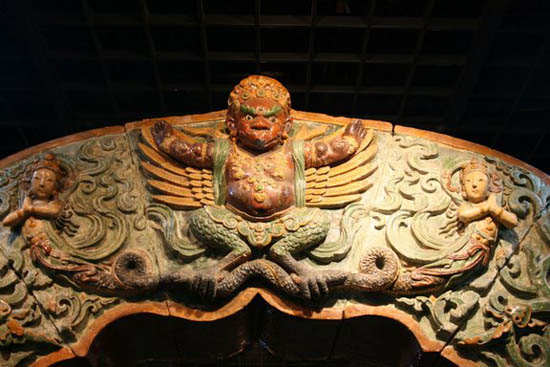 This Buddhist Pagoda had two damages the first was A bolt of lightning struck the tower and knocked of the top three stories, knocking down the spiral staircase down to the 7th floor in 1801, shortly before the tower was destroyed but the entire tower was mostly destroyed by rebels in the 19th century during the period 1840-1850 during the course of the Taiping Rebellion gaining control of the city and marked its end when they smashed the stairs to stop others from using it as a platform. Later around 1856 the rebels destroyed even the remaining parts of this beautiful structure in vengeance.
This Buddhist Pagoda had two damages the first was A bolt of lightning struck the tower and knocked of the top three stories, knocking down the spiral staircase down to the 7th floor in 1801, shortly before the tower was destroyed but the entire tower was mostly destroyed by rebels in the 19th century during the period 1840-1850 during the course of the Taiping Rebellion gaining control of the city and marked its end when they smashed the stairs to stop others from using it as a platform. Later around 1856 the rebels destroyed even the remaining parts of this beautiful structure in vengeance.
For years the remnants ,the rubble and ruins remained at the site lying uncared . but now the porcelain tower of Nanking is now under reconstruction since the Chinese Government has started to rebuild and reconstruct its rich ancestry wonder of the world in the same style and the rubble has been cleared. While the area of Nanjing is beautiful and a great place to visit, anyone who wishes traveling to see the remnants or the Porcelain Tower of Nanjing in any form may wish to wait until it has been fully reconstructed.
It existed up to the middle of the 19th century and the outside world came to know when it was Discovered by the Western world by traveling European visiting the area. Since Nanjing confucius temple was listed as one of the Seven Wonders of the World.
The porcelain tower of Nanking has seen as a national treasure to both locals and other cultures around the world.
Hotels in the region:
Check availability, maps, photos and reviews before traveling, and book at the guaranteed lowest price.











